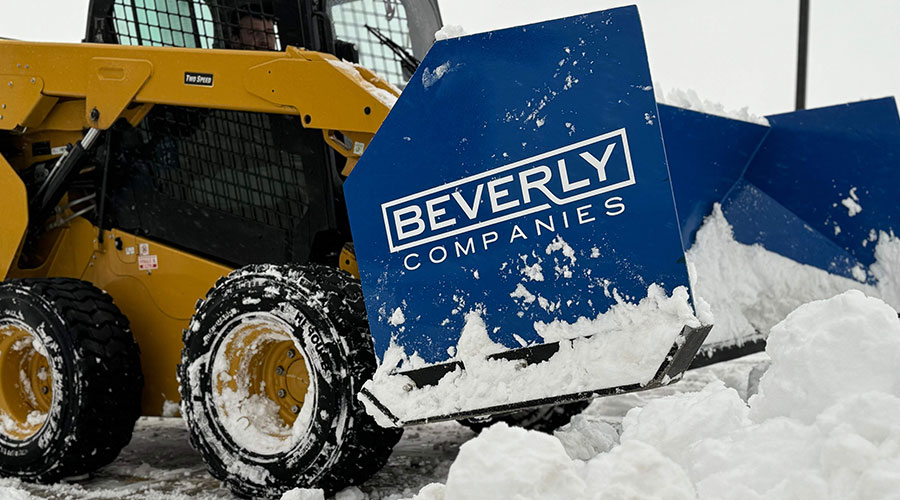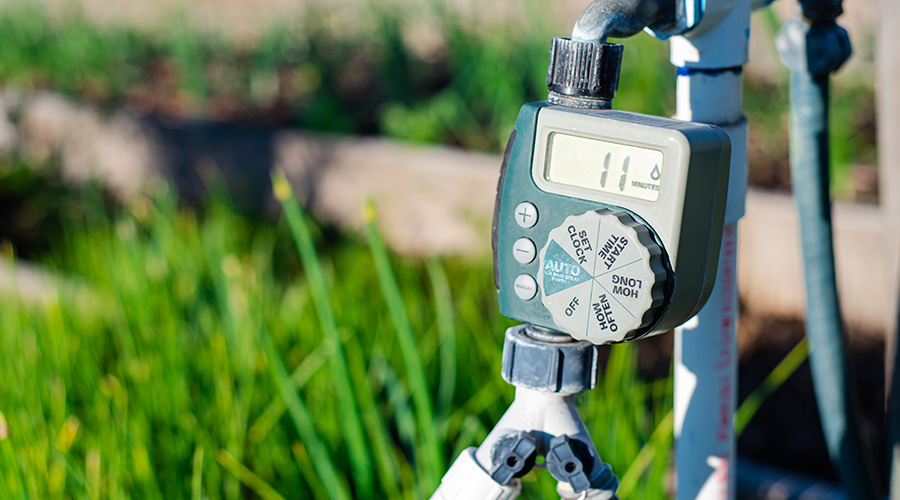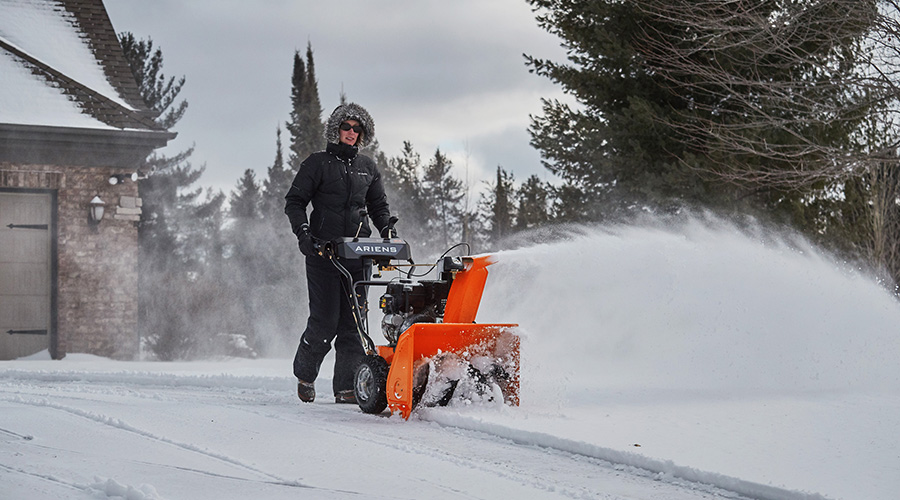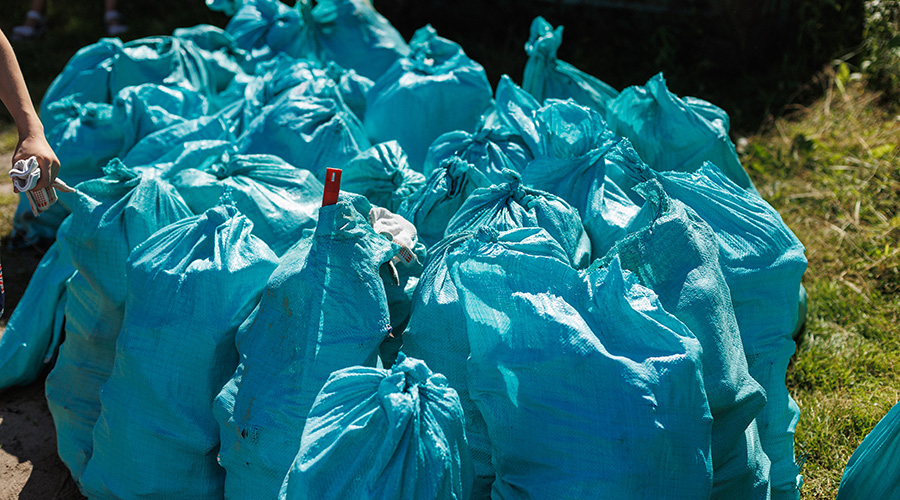Mowing Safety: A Recipe for Success
A comprehensive safety program for grounds care operations can help prevent accidents and increase worker productivity
Lawn mowers and tractors are the primary workhorses of most grounds care operations. They are also a potential source of severe injury or even death.
To prevent tragedies, grounds care managers must make safety precautions a top priority when working with and around mowers and tractors.
System Check
Keeping mowers and tractors in proper working order is essential for safe operations. Attention and commitment to routine maintenance goes a long way to ensuring operator safety. Worn belts and brakes, loose bolts, faulty wiring, improper tire pressure and even broken seat belts can contribute to injury in the workplace. Unsafe equipment is not only a danger to the operator but to others in the vicinity of the mowing operations.
The operator or mechanic should conduct a maintenance inspection before each use, instead of simply assuming a piece of equipment that worked yesterday is in top shape today. Maintenance checklists are especially important if equipment is not used daily or if more than one operator uses a piece of equipment.
Manufacturers are continually improving safety features on mowing equipment and tractors. Automatic shutoffs, ergonomic hand controls, vibration and noise reduction, roll bars, and seat belts are among the safety features included in today’s mowing equipment.
Deflectors and guards are also more common on mower decks and should remain in place when mowing near streets, parking lots and other places where flying objects thrown by the mower might damage property or people.
Some manufactures have equipped new riding mowers with back-over protection devices, which prevent the blade from turning while the mower is in reverse. These back-over protection devices also might include a sensor that stops the engine or the blades or the wheels when it detects a bystander behind the machine. Managers should ask equipment manufacturer if a back-over protection device can be installed on existing equipment.
Finally, operators and mechanics should not override safety features. In some cases, safety mechanisms might seem cumbersome and a drag on productivity; but managers and operators must understand what happens to productivity if an accident occurs.
Providing Training
Before anyone operates power equipment, especially mowing equipment, they must receive proper training. A rotary mower blade spins at 2,000-4,000 revolutions per minute (rpm), or 100-200 miles per hour (mph). It is imperative that mower operators know how to quickly disengage the clutch and stop the engine. Operators should know the location and function of all the controls.
Some organizations require operators to be trained, tested and certified before they operate mowing equipment.
A good training program should include hands-on instruction, watching safety videos and reading the owners manual. Safety training must be completed in a manner and language that all workers can understand.
Managers have access to many good resources grounds care training. The National Agriculture Safety Database (NASD) web site offers good training aids. Professional landscape associations, such as the Professional Grounds Management Society and the Associated Landscape Contractors of America, also provide training materials. Many excellent private companies also specialize in safety training.
Manufacturers’ representatives also might be willing to provide on-site training for new equipment. This is an excellent, inexpensive way to effectively train staff on safe and productive operating procedures for a specific piece of equipment.
Managers must make sure staff has adequate practice with the equipment before heading to a job site. Inexperienced mower operators not only can injure themselves, but the mower itself might be damaged. Also plants, trees and other landscape features can be destroyed.
Training in equipment operations, however, is only one part of mower training. Operators also should be trained in safe maintenance of equipment. Changing blades and refueling the engine can be extremely dangerous if done improperly.
Make sure employees always disconnect wires or remove spark plugs when repairing or maintaining equipment. This practice will eliminate an accidental engine start while they’ve got body parts in and around dangerous equipment parts.
Continual training and safety reminders are essential to ensuring safety. Some organizations have a safety discussion each morning before workers head out to work. Others have weekly tailgate training sessions.
Keeping safety on everyone’s mind throughout the year and, most importantly, during the busiest seasons will greatly reduce the change of accidents.
Personal Protection and Safety
Mower operators should wear protective, close-fitting clothing because loose or baggy clothing can get caught in moving parts. Long pants and long sleeves also protect against harmful ultraviolet rays.
Steel-toed boots or shoes also provide the most protection, but sturdy boots or shoes are a must. Never allow workers to wear open-toed shoes or sandals.
Operators should always wear safety glasses or goggles while mowing. OSHA reports that thousands of people are blinded each year from work-related eye injuries that could have been prevented with the proper selection and use of eye and face protection.
Eye injuries alone cost more than $300 million per year in lost production time, medical expenses and worker compensation. A mower blade moving at speeds around 100 miles per hour can throw rocks or other debris, resulting in severe damage and even blindness. Dust and mulch kicked up by a mower can also cause serious eye injury.
All workers operating loud power equipment should wear ear protection. Continual exposure to loud noise can cause hearing loss. New mowers and other power equipment are being engineered with noise reduction features for the benefit of the operator, as well as the comfort of people in the area.
Instruct operators on safe working conditions. Never allow work to be done in unsafe conditions. Lawns should be policed carefully for debris before mowing. Sticks rocks and other debris can become hazardous when hit and thrown from a mower.
The mower operating also should survey the area to locate potholes or other hidden hazards before beginning. Mowing also should be scheduled at times when no people are in the area.
Mowing all day can be fatiguing, so schedules should allow operators to take frequent breaks, or they should be assigned various tasks throughout the day to break up the monotony.
Obviously, workers should not mow in rainy or stormy weather. Even mowing wet grass can be dangerous, especially when mowing slopes or berms.
Managers also should not allow two mowers to work too close together. Make sure mowers can see each other at all times and are a safe distance apart in case one hit debris. Remember, a rock or wire can be thrown 100-200 feet or further, depending on the object and the mower.
Finally, make sure the operator selects the proper equipment for the size of job. A mower that is too large for an area can be dangerous for the operator and cause property damage. Mowing slopes and berms might require special equipment.
Safety Checks
All of the training, checklists and certifications won’t mean much if employees don’t follow safety procedures. Responsible managers and supervisors must investigate, get out in the field, and shop and check to make sure workers follow safety procedures. If they don’t, managers will have to take action.
Managers have a better chance of succeeding this effort by getting employees involved in promoting safety. Possibly reward people who "get caught" using safety procedures or who uncover unsafe conditions or practices.
Be creative and get everyone involved in developing and monitoring a safety program. Accountability, responsibility and fun are essential for a successful program. A successful safety program will lead to a safe, productive and cost-effective workplace.
Although safety is no laughing matter, managers might consider injecting some fun into this serious to take notice and keep the issue at the forefront of daily activities.
STARS for Safety
To promote the idea of getting everyone involved and making mowing safety a top priority, the Associated Landscape Contractors of America (ALCA) has designed a safety-training program for its members. The ALCA STARS (Safety Training Achieves Remarkable Success) safe company program is designed for companies that want to lead with safety and will make a commitment to safety. Requirements for the program include these steps:
-
Develop a safe company program following the guidelines in the ALCA STARS safety resource manual.
-
Establish an active safety committee with the company.
-
Conduct weekly safety awareness training.
-
Document, measure and investigate every accident.
-
Meet OSHA posting requirements.
-
Enter the annual ALCA/CNA Safety Contest.
-
Share their best safety practices with fellow STARS members.
-
Encourage others to become members.
This program could be a model for grounds care departments seeking to develop a fun and rewarding safety program within any organization, small or large.
|
Related Topics:











